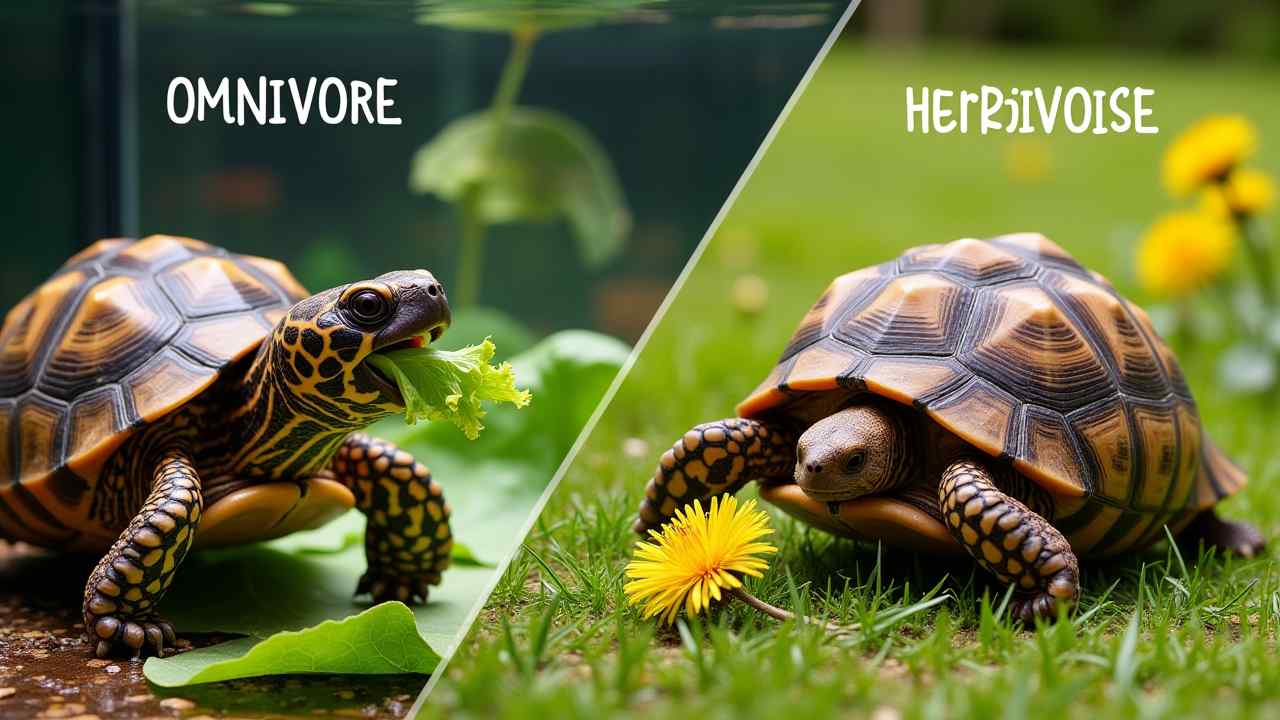
🐢 A Complete Guide to the Turtle Diet (What to Feed Your Pet)
🐢 What is a Turtle Diet? A Guide for Aquatic, Semi-Aquatic & Land Turtles 🐢
Turtles are fascinating reptiles. They have been on our planet for millions of years. As pets, they can live for many decades. Providing them with the right diet is the single most important factor for a long, healthy life.
However, there is no single "turtle diet." The world of turtles is incredibly diverse. What a turtle eats depends entirely on its species. An aquatic turtle and a land tortoise have completely different needs. Feeding the wrong diet can be very dangerous.
This guide will explain the basics of a healthy turtle diet. We will focus on the most common types of pet turtles. Let's learn how to feed your shelled friend correctly. ✅
🤔 What Are the Main Dietary Groups for Turtles?
Turtles can be divided into three main dietary groups. It is crucial to know which group your turtle belongs to. Their entire digestive system is adapted to a specific type of food. The three groups are:
- Carnivores: These are meat-eaters. This group includes species like snapping turtles.
- Herbivores: These are plant-eaters. Most land-based turtles, or tortoises, are herbivores.
- Omnivores: These turtles eat both plants and animals. Most common pet aquatic turtles, like Red-Eared Sliders, are omnivores.
Many omnivorous turtles also change their diet as they age. Young turtles often eat more protein. As they mature, their diet shifts to include more plants.
🥬 What is the Diet for Common Pet Aquatic Turtles?
This section is for popular pets like Red-Eared Sliders, Painted Turtles, and Cooters. These semi-aquatic turtles are omnivores. They require a balanced mix of commercial food, protein, and vegetables. A varied turtle diet is a healthy one.
What is the Foundation of Their Diet?
A high-quality commercial aquatic turtle pellet should be the staple. This should make up about 50% of an adult's diet. Look for reputable brands like Mazuri or Zoo Med. These pellets are nutritionally complete.
What Proteins Should You Offer?
Live protein provides enrichment and nutrients. This should be about 25% of their diet. Good choices include feeder fish like guppies, earthworms, and insects like crickets or dubia roaches. Avoid raw chicken or beef.
Do They Need Vegetables?
Yes, leafy greens are essential. This should make up the final 25% of their diet. Offer pieces of red leaf lettuce, dandelion greens, and parsley. You can also add aquatic plants like anacharis to their tank for them to graze on.
🌿 What is the Diet for Land Turtles (Tortoises)?
The diet for a tortoise is completely different. A common pet like a Russian or Greek tortoise is a strict herbivore. Their diet should be high in fiber and low in protein. Feeding them the wrong food is extremely harmful.
What is the Foundation of Their Diet?
The best turtle diet for a tortoise is a variety of broadleaf weeds. This should be about 90% of what they eat. Safe, healthy weeds include dandelion greens and flowers, clover, and plantain weed. Growing a tortoise-safe garden is ideal.
What Foods Should Tortoises Never Eat?
This is critically important. Never feed a tortoise animal protein. This includes dog or cat food. It will cause severe kidney damage and shell deformities (pyramiding). You should also avoid fruit for most grazing species. The high sugar content can cause digestive problems.
☀️ What About Supplements for a Healthy Turtle Diet?
Proper supplementation is a must for pet turtles. It is vital for their shell and bone health. Without it, they can develop serious health problems. This is a non-negotiable part of their care.
Calcium and Vitamin D3 are the key supplements. Aquatic turtles can get calcium from a cuttlebone left in their tank. Tortoises need their food lightly dusted with a calcium powder a few times a week.
Most importantly, all turtles need a UVB light. This special light allows them to produce their own vitamin D3. Without vitamin D3, they cannot absorb calcium. A proper UVB setup is essential to prevent Metabolic Bone Disease (MBD). 💧